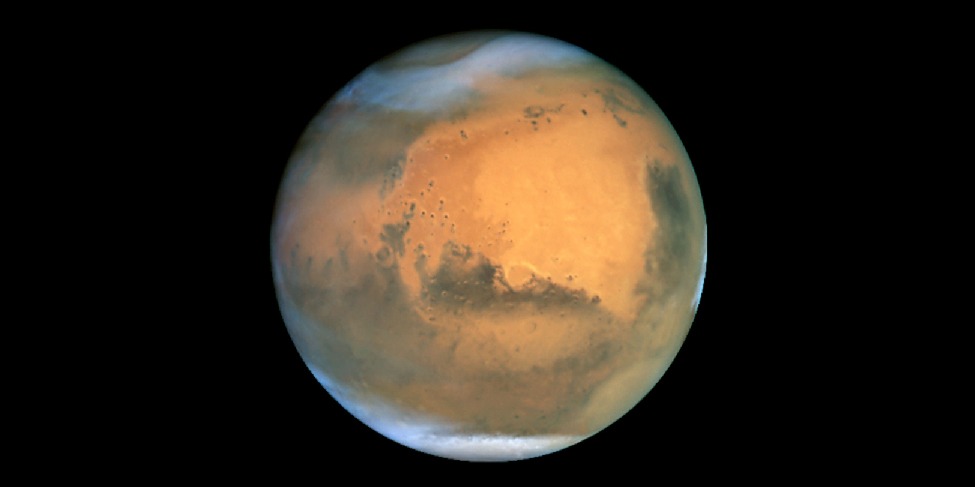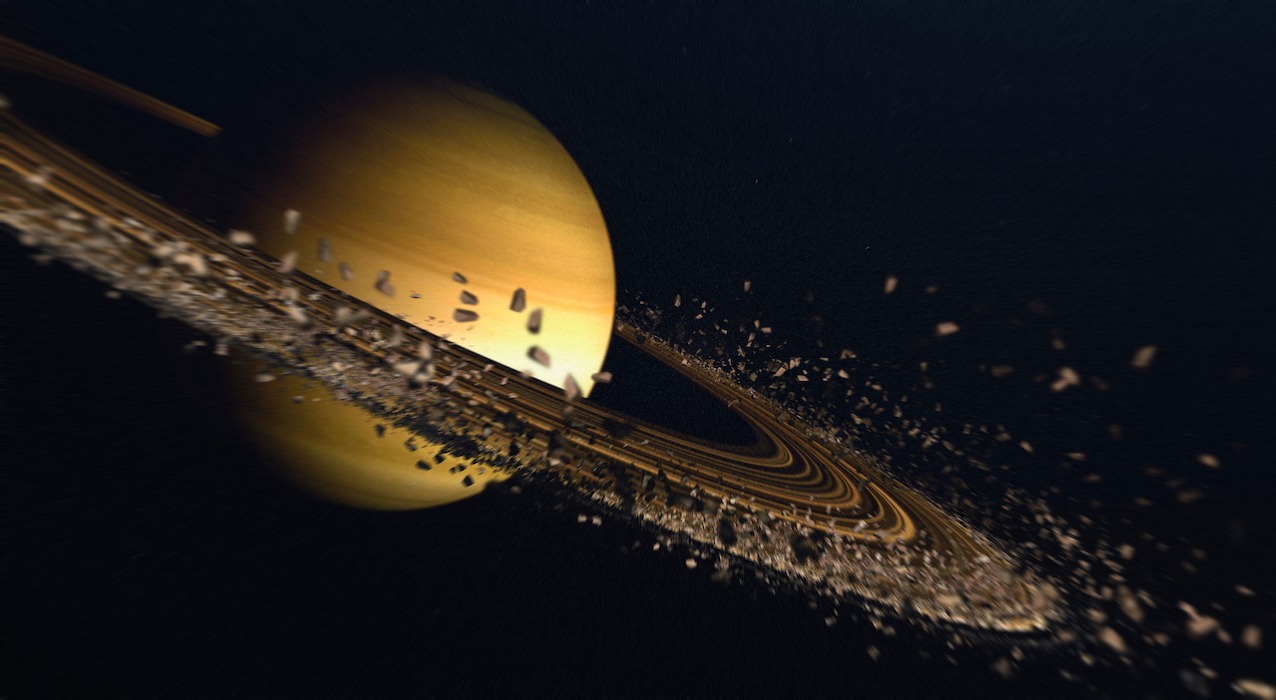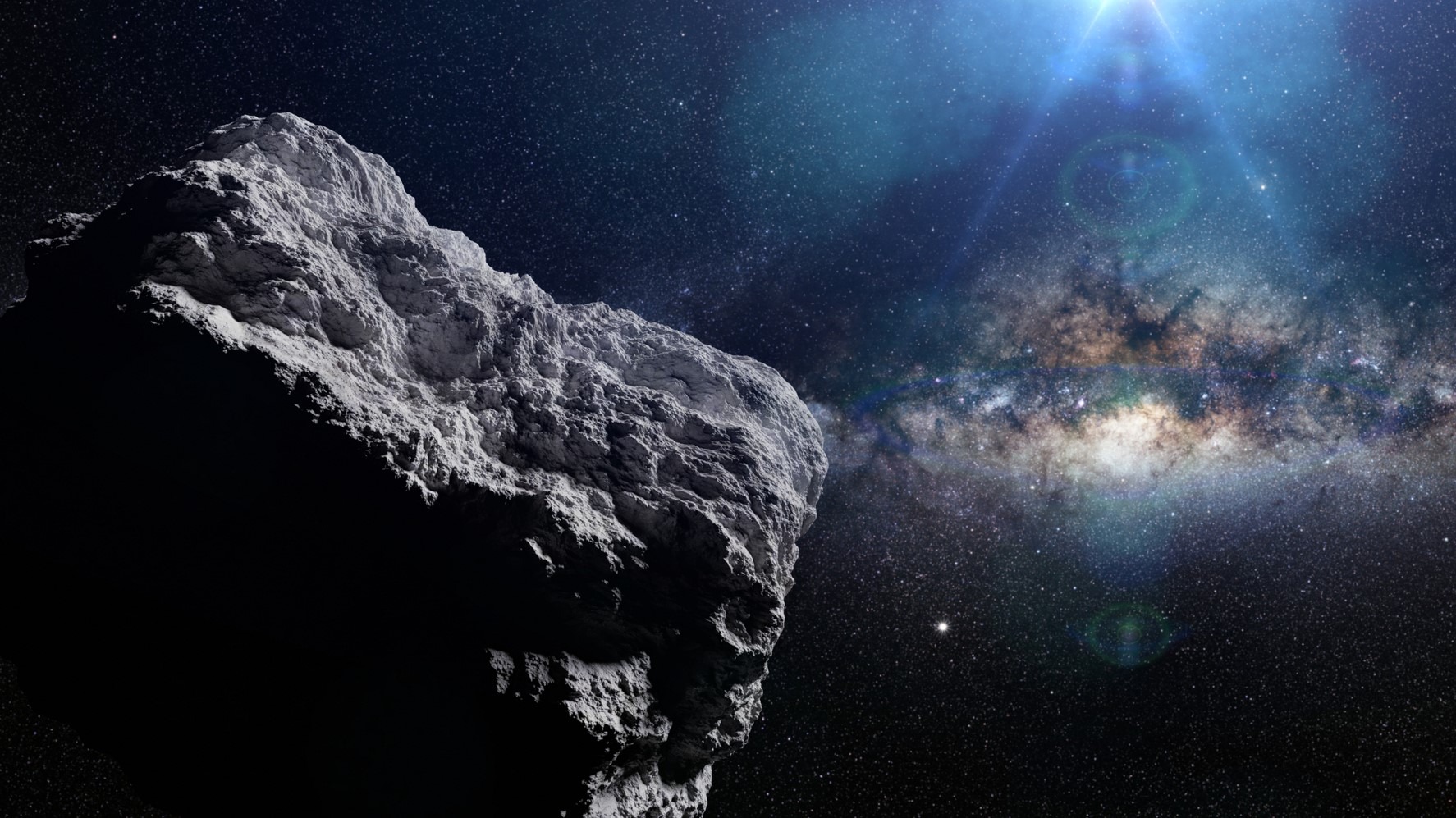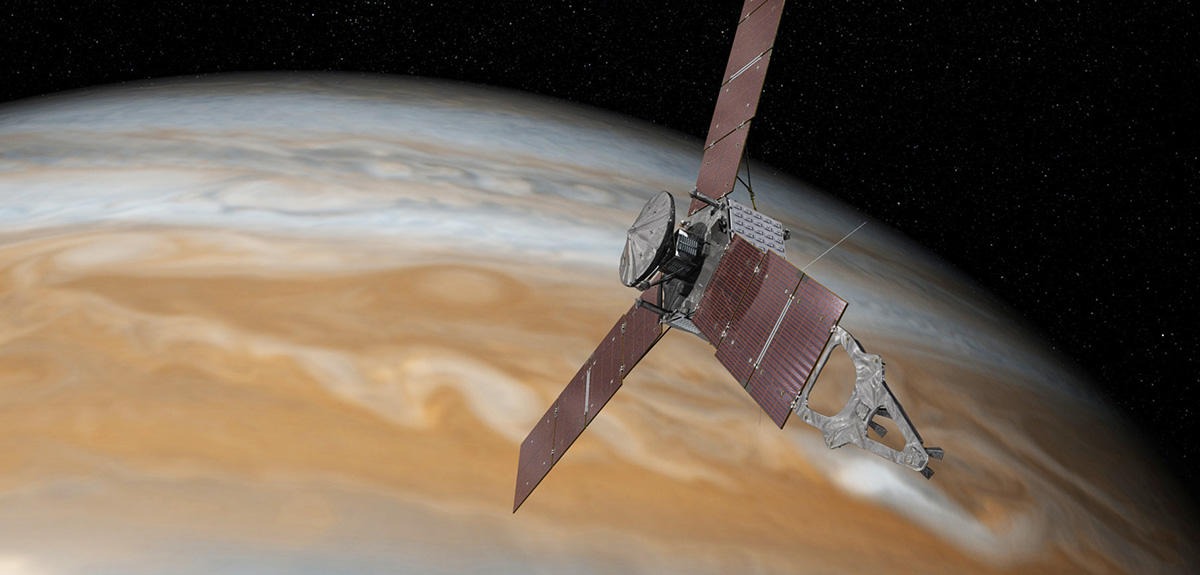When you look up at the night sky, Mars shines with a distinct red color. This color, which gives it the nickname “the Red Planet,” comes from the huge amount of rusty iron on its surface. For centuries, this red dust and its strange features have captured our imagination. We have wondered if it was a dead world or if it had a rich and active past.
Thanks to powerful telescopes and a fleet of robotic explorers, we now know that Mars is a world with an amazing and violent geological history. It is a planet of extremes, with the biggest volcanoes and the deepest canyons in our entire solar system. It is a world that was once wet and possibly home to life, but today, it is a cold and dusty desert. In this article, we will take a deep dive into the geology of Mars, exploring its giant mountains, its vast canyons, its watery past, and the secrets that its surface holds.
The Red Planet’s Heart: An Ancient and Cold Core
Like Earth, Mars has a layered structure. It has a core, a mantle, and a crust. But unlike Earth, Mars’s core is believed to be cold and geologically quiet today. The planet’s heat engine, which is what causes volcanoes and plate tectonics on Earth, has mostly stopped. This is a crucial part of Mars’s story, as it helps to explain why the planet looks the way it does today.
Because Mars’s core is so cold, it no longer has a strong magnetic field. This is why the planet’s atmosphere is so thin. Without a magnetic field to protect it, the atmosphere was slowly stripped away by the solar wind over billions of years. This loss of atmosphere led to a drop in temperature and the loss of its surface water.
The Giant Volcanoes: A Story of Fire and Ice
Mars is a world of huge volcanoes, and they are the largest in our solar system. The most famous of these volcanoes is Olympus Mons, which is a massive shield volcano. It is about 16 miles high, which is almost three times the height of Mount Everest. Its base is about 374 miles across, which is roughly the size of the state of Arizona.
So, how did a volcano on Mars get to be so huge? There are two main reasons:
- Low Gravity: Mars’s gravity is only about one-third of Earth’s gravity. This means that a volcano can grow much taller on Mars before it collapses under its own weight.
- No Plate Tectonics: On Earth, the plates of the crust are constantly moving. This is what causes volcanoes and earthquakes. But on Mars, there are no plate tectonics. The crust is one solid piece. This means that a volcano can stay in one spot for billions of years, with lava flows building up on top of each other over a very long time, making the volcano bigger and bigger.
The volcanoes on Mars have been silent for millions of years, but scientists still believe that some of them might be active deep under the surface.
The Biggest Canyon: Valles Marineris
Mars is also home to the biggest canyon in our solar system, Valles Marineris. This huge canyon system is about 2,500 miles long, which is long enough to stretch across the entire United States. In some places, the canyon is up to 4 miles deep, which is much deeper than the Grand Canyon on Earth.
How did this enormous canyon form? Scientists believe that it was created by the stretching and cracking of the planet’s crust. In the early days of Mars, there was a huge volcanic region called the Tharsis bulge. As this region grew with magma, it caused the crust around it to swell and stretch. The pressure from this swelling caused huge cracks in the crust, which eventually collapsed to form the giant troughs of Valles Marineris. While the main cause of the canyon’s formation was the cracking of the crust, later water flows and landslides also helped to shape the canyon and make it even deeper.
The Story of Water: Was Mars a Wet Planet?
One of the most important and exciting parts of Mars’s geology is the evidence of its watery past. While the planet today is a cold and dry desert, we have found a huge amount of evidence that billions of years ago, Mars was a much warmer and wetter place.
Riverbeds and Deltas
From orbit, we can see huge networks of riverbeds, deltas, and lakebeds on the surface of Mars. The rovers on Mars, like Curiosity and Perseverance, have also found ancient riverbeds and lakebeds. The evidence shows that there were once huge amounts of liquid water on the planet’s surface. The existence of these ancient bodies of water is a major reason why scientists are so hopeful that they might find evidence of past life.
Polar Ice Caps
Mars has two polar ice caps, one at the north pole and one at the south pole. These ice caps are made of two different kinds of ice: water ice and frozen carbon dioxide (dry ice). The north polar ice cap is mostly made of water ice, while the south polar ice cap is a mix of both. The ice caps grow and shrink with the seasons, but the water ice is permanent. There is so much water ice at the poles that if it all melted, it would cover the entire planet with about 30 feet of water.
The Search for Water Today
Scientists believe that some of the water on Mars might still exist today. They have found evidence of liquid salty water flowing down some crater walls and hillsides during the summer. They have also found a lot of water ice just under the surface of the planet, which could be used for a future human mission. The search for water, both past and present, is a key part of our exploration of Mars.
The Surface Today: A Dusty and Windy World
The surface of Mars today is a very different place from what it was in its past.
Dust and Dust Storms
The famous red color of Mars comes from the huge amount of rusty iron dust on its surface. This dust is everywhere, and it is a major part of the planet’s geology. Mars also has huge dust storms that can cover the entire planet for weeks or even months. These storms are caused by winds that can reach speeds of up to 60 miles per hour, and they are a major problem for our robotic missions.
Impact Craters
The surface of Mars is covered in impact craters from billions of years of meteorite impacts. The craters are a huge part of the planet’s geology and they help scientists to understand the planet’s history. The craters that are a few billion years old are a great place to look for evidence of past water and to study the planet’s geology from a long time ago.
The Robots on Mars: Our Eyes and Hands
The story of Mars’s geology is a story of robots. For decades, rovers have been our eyes and hands on the planet.
- Spirit and Opportunity: These twin rovers completely changed our view of Mars. They found strong evidence that Mars was once a much wetter and warmer place, with a lot of mineral deposits that are formed in water.
- Curiosity: This huge rover landed in the Gale Crater, a place that was once a lake. It has found a lot of evidence of ancient rivers and a lake that could have existed for millions of years. It also found organic molecules in the rocks, which are the building blocks of life.
- Perseverance: The latest and most advanced rover is Perseverance. Its mission is to collect samples from an ancient lakebed and leave them on the surface for a future mission to bring back to Earth. The samples that it is collecting will give us a very detailed look at Mars’s geology and its history.
Conclusion
Mars is a world of geological wonders. From the biggest volcanoes in our solar system to the deepest canyons, the planet has a rich and violent history. The evidence of ancient water, in the form of riverbeds, deltas, and polar ice caps, has completely changed our view of Mars. We now know that Mars was once a much more dynamic and possibly habitable planet. The rovers that are on Mars today are our eyes and hands, and they are helping us to learn more about the planet’s geology every day. The future of Mars exploration is a very exciting one, and the mission to bring back Martian samples to Earth will give us an even more detailed look at the planet’s secrets.










